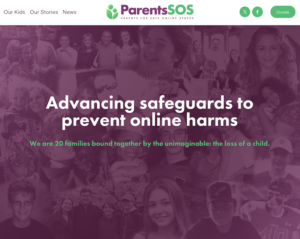Missive for a ban on violent media content for children under the age of 12
On January 22, 2016, a 17 year old boy from La Loche, Saskatchewan in Canada shot 11 people killing four, including two brothers in the shooter’s home, and 7 students and teachers at his school. The boy was described as a ‘loner and chronic gamer’. Previous news reports indicate that in fact all mass shooters are gamers, but of course parents not all gamers are shooters! Extensive research dating back to the 1990’s has clearly documented the causal effect of violent media content on aggression, with the American Academy of Pediatrics in 2009 declaring media violence as a public health risk. Game Transfer Phenomena where gamers carry perceptions from the virtual game into real life, is now documented with research studies. With all this evidence showing harmful effects of video games, why does society continue to ignore the concurrent escalation of physical and sexual violence? The purpose of this article is to raise public awareness regarding the causal relationship between video gaming and both physical and sexual violence. It is imperative at this time that parents, teachers, health professionals, and governments take immediate steps toward a massive public health campaign, and enact a ban of all violent media content for children under the age of 12.
More than one a day. That is how often, on average, mass shootings (four or more people dead) occurred in the United States in 2015, leaving a total of 462 people dead and 1,314 wounded. With the escalating rise in video gaming, extensive research is documenting concurrent rise in aggression and violence. A 2010 meta-analysis of over 1000 studies on the effects of media violence by Craig Anderson and colleagues, reports statistically significant effects of violent video games on aggressive behavior, aggressive cognition, aggressive affect, physiological arousal, empathy/desensitization, and antisocial behavior. In 2009 the American Academy of Pediatrics reports media violence is causally linked to child aggression stating “Although shootings in schools around the world periodically prompt politicians and the general public to focus their attention on the influence of media violence, the medical community has been concerned with this issue since the 1950s. The evidence is now clear and convincing: media violence is 1 of the causal factors of real-life violence and aggression. Therefore, pediatricians and parents need to take action.”
Research literature explains the underlying mechanism linking media violence to aggression, which is termed Game Transfer Phenomena (GTP), defined as a physiological state where gamers retain perceptions and act out behaviours endemic in the game. A 2015 study of 2362 gamers between the ages of 18-22 years by Angelica B Ortiz de Gortari and Mark Griffiths from Nottingham Trent University reported the five areas of ‘real life’ human function that were altered following video game play (excerpted from linked research).
- Altered visual perception: 77% retained video game imagery with eyes closed; 31% with eyes open.
- Altered auditory perception: 65% misinterpreted real life sounds as those coming from a video game.
- Altered body perception: 29% reported sensation of mind being disconnected from their body.
- Automatic mental processes: 63% still in mind set of video game following play.
- Actions and behaviors: 40% acted out behavior and activities influenced by the video game.
A 2016 study by Ohio State researchers concluded that “People who have a steady diet of playing these violent video games may come to see the world as a hostile and violent place.” Brad Bushman, professor of communication and psychology at OSU, continues, “These results suggest there could be a cumulative effect” in making video game players more aggressive and violent over the long term as well as over the short term.
Aggression acted out as a result of video game immersion is not only of the physical type, but sexual violence as well due to graphic sexual imagery imbedded in gaming. Sexual and physical violence increases in proportion to violence in video games, by media, and in advertising. The recent explosion in pornography viewing has fueled both the demand for more depraved and illegal sexual imagery, as well as the supply chain for the international sex trade. Projected rises in child and domestic sexual abuse are anticipated if not already documented, as immersion in media violence grows ever more prevalent. The viewing of video game pornography by very young children, has born witness to concurrent rise in sexual violence of children against children. One only has to read the manifesto by Elliot Rodger who in 2014 shot and killed six people in Santa Barbara, California, to clearly understand the impact of early and prolonged exposure to physical and sexual media violence. While these shooter atrocities are well documented by the media, there has been scant to no attention given to the relationship between acts of violence and playing video games.
Game Transfer Phenomena is routinely observed by myself and colleague in daycare/preschool, school and clinical settings, characterized by the following: video game speak e.g. “I’ll shoot you with my AK47”, explosive and sudden violence, zoned out affect, disconnection from reality, hypervigilance to auditory and visual stimuli, and resolving conflict with aggression. Managing student violence is rapidly becoming a major concern in schools world-wide, as is managing and confiscating cell phones from students who are using them inappropriately. What happens when children, and even toddlers are repeatedly exposed to media violence at a young age by watching or playing violent video games with their siblings or Dad? Will the resulting aggression from early exposure to media violence, be more frequent, intense, or longer in duration? Will early and prolonged exposure to media violence increase incidence of already epidemic levels of mass shootings?
Sexual and physical violence against women and children is rising. Rape crisis centres now exist on military bases and university campuses. Mass shooting occurrence is now daily in the U.S. Graphic and explicit violent physical and sexual imagery is everywhere…in newspapers, billboards, commercials, cartoons, TV sitcoms, movies…it’s everywhere. The need to immediately enact a public awareness campaign regarding the impact of media violence on aggression is imperative. Putting a stop to the unrestricted proliferation of violent physical and sexual media content, is long overdue. Forward this article to your provincial or state health, education, and social service ministries and departments today, asking for a ban on all violent media for children under the age of 12 years.
Cris Rowan is a pediatric occupational therapist and biologist, an expert in the area of impact of technology on children, speaks internationally on the subject, and authored “Virtual Child – The terrifying truth about what technology is doing to children” book.





3 Responses
Asking for a ban of all violent media for people under the age of 12 is too much to ask for. On one hand, violence in the U.S. is a problem, however most of the studies that have linked video games to real life violence have been debunked for a variety of reasons, including other enviornmental factors, prediposition to mental illness, etc. It is ridcuolous to indicate that ” all mass shooters are gamers” by linking a article that cherrypicks 14 selected murders that also ignores other factors that contributed to why they decided to murder other people. I go on about this, but to sum it up, I don’t think that this article gives a solid argument to ban all violent media for kids under 12.
I would ask that you please rethink your position on video games and media violence with reference to this statement by American Academy of Pediatrics, an organization which represents all pediatricians in the U.S.
“Although shootings in schools around the world periodically prompt politicians and the general public to focus their attention on the influence of media violence, the medical community has been concerned with this issue since the 1950s. The evidence is now clear and convincing: media violence is 1 of the causal factors of real-life violence and aggression. Therefore, pediatricians and parents need to take action.”
http://pediatrics.aappublications.org/content/124/5/1495
I recently attended and presented at the Institute for Digital Media and Child Development (consortium of researchers and clinicians) conference in Calif Oct. 2015 sponsored by AAP and NSC. Panel presentations and discussion on the topic of impact of media violence on child aggression cited below meta-analysis as pivotal in confirming a causal role stating “The evidence strongly suggests that exposure to violent video game is a causal risk factor for increased aggressive behavior, aggressive cognition and aggressive affect, and for decreased empathy and prosocial behavior”.
https://public.psych.iastate.edu/caa/abstracts/2010-2014/10asisbsrs.pdf
We can continue with our heads in the sand, or wake up to the reality that media sexual, emotional and physical violence is the primary salient factor for the rise in violence.
Your argument would be more convincing if things such as youth violence, etc. actually increased in the last 30 years, rather than declined in reality. Your second source also states that video games is a “casual risk” , just as enviornmental factors, parenting can have effects as well. Every time a new art form has come out, whether new music, TV, video games, people have been quick to decry its presence and blame it for the cause of society’s problems such as violence. This argument does not hold up under real life situations, simply because the vast majority of people can see the differences between fantasy and reality, and that where most of these studies fall flat. There haven’t been any conclusive evidence linking game content to real world consequences, and these two studies fail to change that.